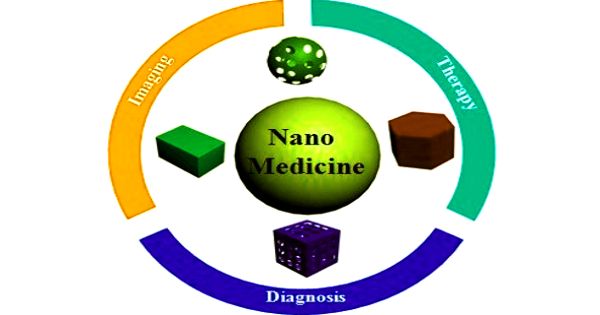Nanomedicine is the medical application of nanotechnology. It is a branch of medicine that applies the knowledge and tools of nanotechnology to the prevention and treatment of disease. Nanomedicine ranges from the medical applications of nanomaterials and biological devices to nanoelectronic biosensors and even possible future applications of molecular nanotechnology such as biological machines. It involves the use of nanoscale materials, such as biocompatible nanoparticles and nanorobots, for diagnosis, delivery, sensing, or actuation purposes in a living organism.
The application of nanotechnology for medical purposes has been termed nanomedicine and is defined as the use of nanomaterials for diagnosis, monitoring, control, prevention, and treatment of diseases.
Nanomedicine is defined as the use of nanotechnology for medical therapeutics by developing nanoscale agents for the treatment of various kinds of diseases. Several scientific areas have benefited significantly from the introduction of nanotechnology and the respective evolution. Current problems for nanomedicine involve understanding the issues related to toxicity and environmental impact of nanoscale materials (materials whose structure is on the scale of nanometers, i.e. billionths of a meter). This is especially noteworthy in the development of new drug substances and products.

The application of nanotechnology for medical purposes has been termed nanomedicine and is defined as the use of nanomaterials for diagnosis, monitoring, control, prevention, and treatment of diseases. Functionalities can be added to nanomaterials by interfacing them with biological molecules or structures. Nanomedicines simultaneously present themselves with a wide range of technological, scientific, regulatory, and legal challenges. The size of nanomaterials is similar to that of most biological molecules and structures; therefore, nanomaterials can be useful for both in vivo and in vitro biomedical research and applications. Each of these challenges requires an early awareness, appropriately scientific and methodological expertise, and consensus on the more suitable and applicable regulatory requirements.
This revolutionary technology has been applied in multiple fields through an integrated approach. Thus far, the integration of nanomaterials with biology has led to the development of diagnostic devices, contrast agents, analytical tools, physical therapy applications, and drug delivery vehicles. An increasing number of applications and products containing nanomaterials or at least with nano-based claims have become available. It holds tremendous promise to revolutionize medicine across disciplines and specialties, but this promise has yet to be fully realized.
















